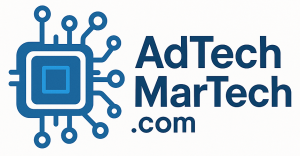In an era where businesses generate and consume vast amounts of digital content, effective management of digital assets has become essential. Digital Asset Management (DAM) systems have evolved to meet these demands, offering organizations tools to store, organize, retrieve, and distribute digital content. However, implementing a DAM system can pose numerous challenges. This guide explores the complexities of DAM and provides insights on how to navigate its landscape effectively.
Understanding Digital Asset Management
At its core, Digital Asset Management refers to the processes and technologies used to organize, store, and share digital assets such as images, videos, documents, and audio files. A DAM system acts as a central repository that facilitates access and control over these assets, streamlining workflows and enhancing collaboration across teams.
Key Components of a DAM System
- Asset Storage: A secure, scalable storage solution that accommodates various file types and ensures data integrity.
- Metadata Management: The capability to add descriptive information to assets, making them easier to search, filter, and retrieve.
- Search and Retrieval: Advanced search capabilities that allow users to locate assets quickly, often using tags, categories, or full-text search.
- Workflow Automation: Streamlined processes that manage the lifecycle of assets from creation to distribution, improving efficiency.
- User Access Control: Tools to manage permissions and roles, ensuring that sensitive assets are accessed only by authorized personnel.
Challenges in Digital Asset Management
While the benefits of a DAM system are clear, the path to successful implementation can be fraught with obstacles.
1. Choosing the Right DAM Solution
With numerous vendors offering varying features, selecting a DAM solution that aligns with specific business needs can be daunting. Organizations must assess their requirements, including scalability, integration with existing systems, and user-friendliness.
2. Migration and Integration
Transitioning from legacy systems to a new DAM can be overwhelming. Ensuring seamless integration with other tools (like Content Management Systems or Customer Relationship Management software) is critical. Carefully planning the migration process, including asset organization and metadata mapping, is vital to reduce disruptions.
3. User Adoption
A sophisticated DAM system will only be effective if users embrace it. Training and change management play crucial roles in encouraging teams to utilize the new system. Providing resources, support, and a user-friendly interface can facilitate smoother adoption.
4. Ensuring Data Security
As digital assets can include sensitive information, ensuring robust security measures is paramount. Organizations must implement access controls, regular audits, and comply with data protection regulations to safeguard their assets.
5. Managing Asset Lifecycles
Digital assets have finite lifecycles, and it’s essential to know when to archive, update, or retire them. Establishing protocols for asset lifecycle management can help maintain an organized repository and ensure that outdated assets do not clutter the system.
Best Practices for Successful DAM Implementation
To navigate the complexities of Digital Asset Management effectively, organizations should consider the following best practices:
1. Develop a Clear Strategy
Before implementing a DAM system, outline clear goals and objectives. Understand the specific needs of your organization and the stakeholders involved. A well-defined strategy will guide the selection and implementation process, minimizing risks.
2. Invest in User Training
Comprehensive training programs should be designed for all users, tailored to their specific roles and needs. Ongoing support and resources can reduce resistance and encourage engagement with the system.
3. Focus on Consistent Metadata Practices
Develop a standardized approach to metadata tagging that aids in asset discovery and retrieval. Consistent tagging practices improve searchability and enhance the user experience.
4. Regularly Review and Optimize
A DAM system is not a “set it and forget it” solution. Regular reviews and updates to the system, including user feedback, can uncover areas for improvement and help in adapting to changing organizational needs.
5. Emphasize Collaboration
Encourage interdepartmental collaboration when selecting and using a DAM system. Input from various teams (marketing, design, sales) can provide insights into their unique requirements and enhance the system’s overall effectiveness.
The Future of Digital Asset Management
As technology continues to evolve, so will Digital Asset Management solutions. Emerging trends such as artificial intelligence, machine learning, and automation are set to revolutionize how organizations manage their digital content. Advanced analytics will provide valuable insights into asset usage and performance, informing future strategies and investments.
Conclusion
Navigating the complex landscape of Digital Asset Management requires careful planning, user engagement, and a focus on best practices. By understanding the challenges and taking proactive steps, organizations can harness the power of DAM systems to drive efficiency, enhance collaboration, and ultimately, achieve their digital goals. Embracing this journey not only protects valuable assets but also empowers teams to create and innovate more effectively in a digital-first world.









